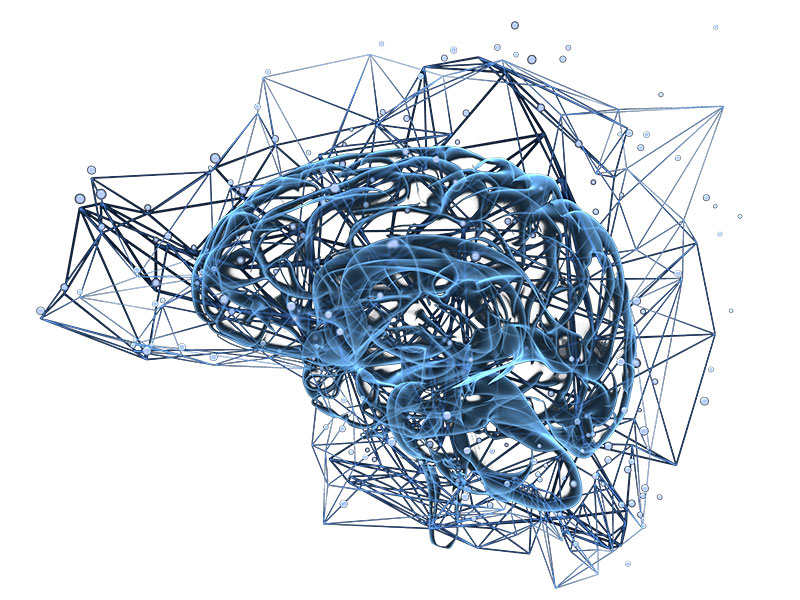A Sanford Health neuropsychologist is developing a simple device that could give people with traumatic brain injuries, anxiety or autism instant relief from overstimulation.
Lindsay Hines, Ph.D., who practices in Fargo, North Dakota, calls it the weighted brain-break cap. It’s designed to be portable, so people can quickly block out light, sound and all other stimuli when they feel overwhelmed.
“I’ve had patients that have had to hide off in a bathroom stall for a little bit. That is not optimal. It’s not dark, and does not limit outside stimuli from coming in. The brain needs rest and relaxation to recover the energy needed to re-engage in daily activities,” she said.
Most people who suffer a mild concussion quickly rebound, Hines said. Those with more severe head trauma, as well as some people with anxiety or autism, often struggle as they transition into their daily routine. Bright lights, conversation and the normal stress of life can make it difficult to think clearly or move normally. Some get a headache.
“Individuals recovering from severe traumatic brain injuries reach a point of overstimulation when engaging in daily activities, where they are easily overwhelmed. Even a minor task feels like being pushed to the limits, such as being asked a question or trying to engage in any kind of problem-solving or decision-making. Overstimulation after a brain injury results in feeling short, irritable and overwhelmed,” Hines said.
“What we need to have happen at that time is for the person to take a ‘brain break.’ That’s what we call it when you go to a place of low stimulation, with low light, no phone and no other stimuli coming in. The brain should not have to filter out any external stimuli, such as talking or music. The brain should not be engaged in mediating internal stimuli, such as thinking about the day or planning the rest of one’s day. The goal is to have a clear mind, void of any thinking.”
Refuel the brain
Most busy people know what it’s like to be mentally spent at the end of a long day. That’s because the brain runs out of energy doing everyday tasks: talking with others, studying, working, engaging with family members, Hines said.
People with brain trauma or some other condition are especially prone to being easily overwhelmed. Even just a few minutes of escape in a dark, quiet state literally refuels the brain, she said.
“It’s not burning anything (energy) in that time because it’s not filtering out any stimuli coming in. It’s not processing. It’s not working through any thinking. It’s just plain letting it get back that fuel it needs to be able to engage in basic thinking and acting,” Hines said.
When people don’t take that brain break and instead try to push through, which is natural human behavior, they actually hinder their recovery.
Hines refers patients to speech therapy for cognitive rehabilitation that helps them learn how to identify early signs they may be headed for overstimulation.
“There are subtle symptoms that happen before one reaches irritability and overstimulation. There is a point where you feel like you’re going to crawl out of your skin. It takes some training to become aware of the feeling before reaching overstimulation,” she said.
“After a brain injury it is important to get back out there and be part of society, to be engaged. But it’s also important not to push. If you’re having post-concussive symptoms, you want to be active and engaged in cognitively demanding activities until that point where you feel like you’re about to get overwhelmed or overstimulated. That is when it’s time to back off.”
Pandemic down time
Hines had been thinking about cap designs for some time.
When her patient load dropped off with the pandemic, she put the idea to paper and contacted Sanford Health’s commercialization team.
“I finally have time to pursue this and other things I’ve wanted to do to be a well-rounded health care provider,” said Hines, who also conducts pharmacogenetic research funded through the National Institutes of Health.
The cap is designed to be simple and small enough to be carried around, so the person can put it on at work or while out shopping. People usually know they need a brain break but don’t always have a place to take it. With the cap, they don’t have to fear not having a place to go and avoid getting on with their normal routine.
“You need to be able to throw that on instantly. I want my patients to have the immediate break to block out all stimuli,” Hines said. “I’ve had people say, ‘I’ve got this stuffed animal I can wrap around my head.’ Well, you can’t carry this big stuffed animal around with you into work.”
There were about 2.5 million traumatic brain injury-related emergency department visits in 2014, according to the Centers for Disease Control and Prevention. Most people recover within a few weeks, but that same year there were approximately 288,000 hospitalizations. The weighted brain-break cap could possibly help those people with more serious cases, as they return to daily life, Hines said.
Sanford Health values the ideas and problem-solving ability of its physicians, researchers, clinical workers and support staff. Any employee with an idea for a device, therapy, software, tool or other method that helps patients is encouraged to contact the commercialization team and join the dozens of people at Sanford Health who are already inventing.
Learn more
- Having a child with autism
- Cold capping: Improving confidence during cancer fight
- Exercise, social time can slow progression of Alzheimer’s
…
Posted In Behavioral Health, Brain & Spine, Innovations, Neurology, Physicians and APPs, Sanford Stories, Symptom Management
